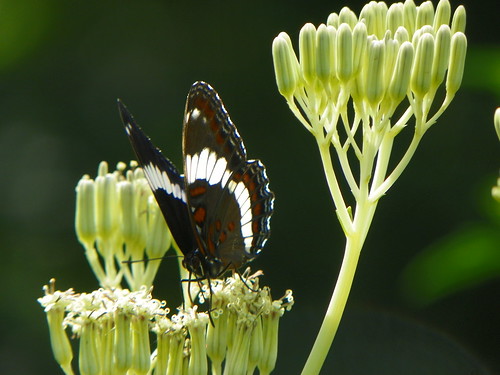
White Admiral on Cacalia atriplicifolia
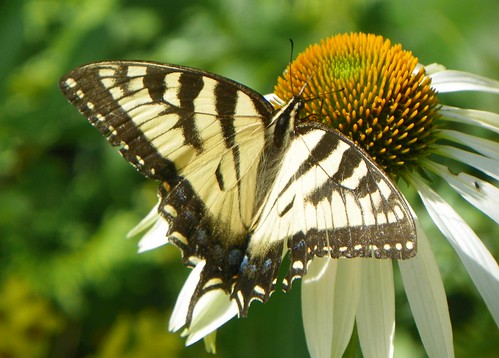
Tiger Swallowtail on Echinacea ‘Alba’
Posted in Sunday Snapshot, tagged Canadian Tiger Swallowtail, white admiral butterfly on July 29, 2018| 1 Comment »
Posted in Animal life, Garden, tagged American Toad, banded hairstreak, Canadian Tiger Swallowtail, cedar waxwing, clearwing hawkmoth, common wood-nymph, crab spider, eastern garter snake, female hummingbird, Green Frog, mayfly, meadowhawk, mountain ash sawfly larvae, mourning cloak, Question Mark butterfly, recording of black-billed cuckoo, red admiral butterfly, skipper, snapping turtle baby, viginia ctenucha moth, white admiral butterfly on July 29, 2014| 2 Comments »
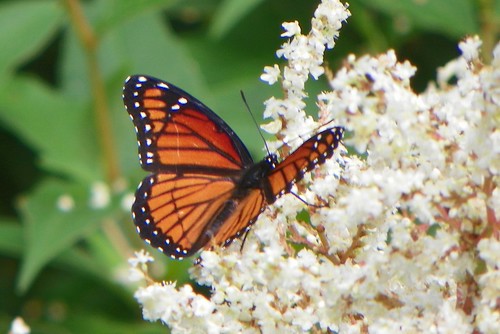
Viceroy (Limenitis archippus)
When I’m walking or working in the garden, I always keep my camera close at hand, because you never know who you might see. The garden plays host to an awesome assortment of creatures. Many garden inhabitants live hidden lives and remain invisible, their presence undetected by we mere humans. Others are more amenable to photography, or at least are engrossed in their own activities and pay no heed to the photographer.
No pesticides of any sort, toxic or organic, are used in my garden. Life is too precious. Plants that don’t thrive in this ecosystem are replaced with more tolerant species. Here is a selection of photographs of garden life. It is by no means all-inclusive. Some visitors are heard, but not seen, so the closing entry is a short recording of a black-billed cuckoo (Coccyzus erythropthalmus), ho-ho-hoing softly from shrubbery.
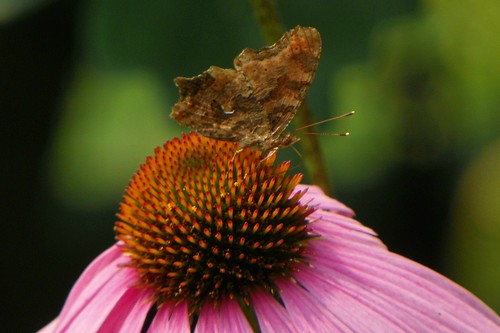
Question Mark (Polygonia interrogationis)
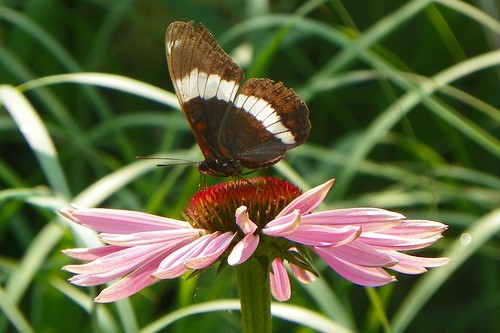
White Admiral (Limenitis arthemis)
>
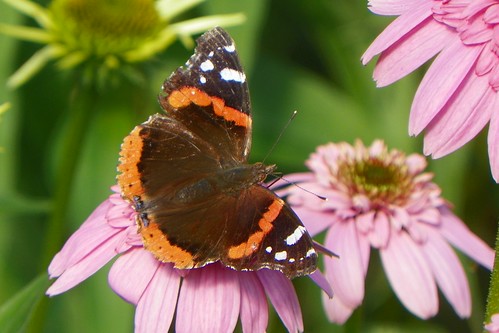
Red Admiral (Vanessa atalanta)
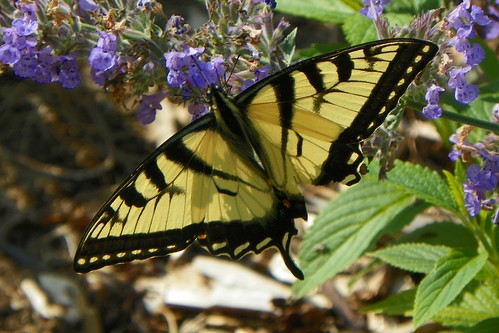
Canadian Tiger Swallowtail (Papilio canadensis)

Banded Hairstreak (Satyrium calanus)

Common Wood-Nymph (Cercyonis pegala)
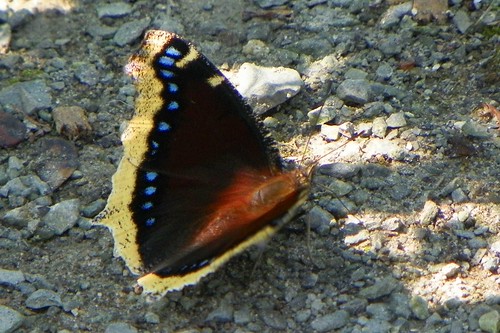
Mourning Cloak (Nymphalis antiopa)
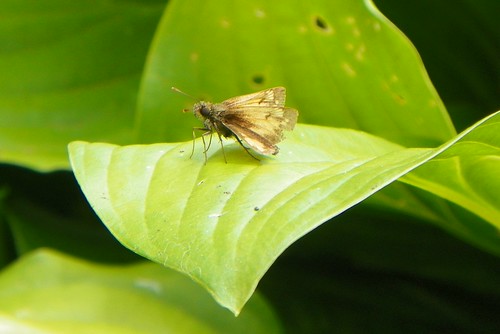
Skipper sp.
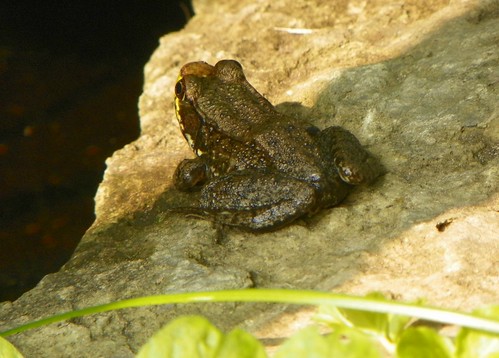
Green Frog (Rana clamitans melanota)
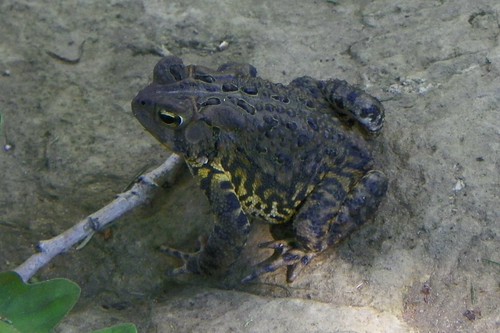
American Toad (Bufo americanus)
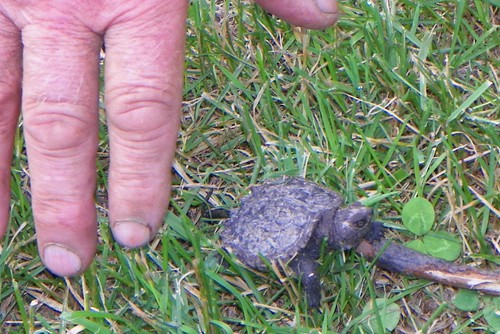
Baby Snapping Turtle (Chelydra serpentina)

Eastern Garter Snake (Thamnophis sirtalis)

Dragonfly, Meadowhawk sp.
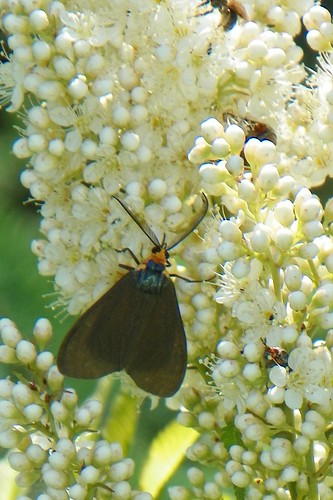
Virginia Ctenucha moth (Ctenucha virginica)
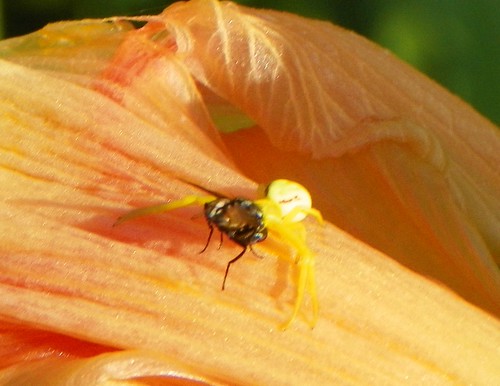
Yellow Crab Spider (Misumena vatia) with prey

Mountain Ash Sawfly larvae (Pristiphora geniculata)
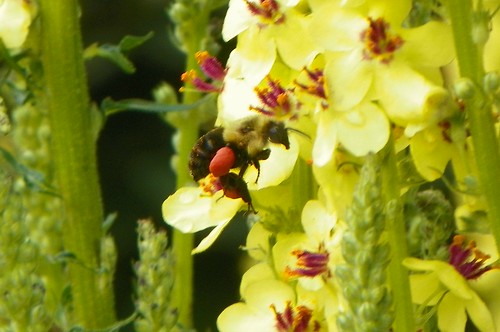
Bumblebee (Bombus sp)

Mayfly (order Ephemeroptera)

Hummingbird Clearwing Hawkmoth (Hemaris thysbe)
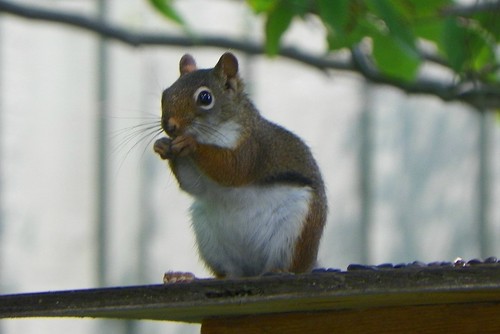
Red Squirrel (Tamiasciurus hudsonicus)
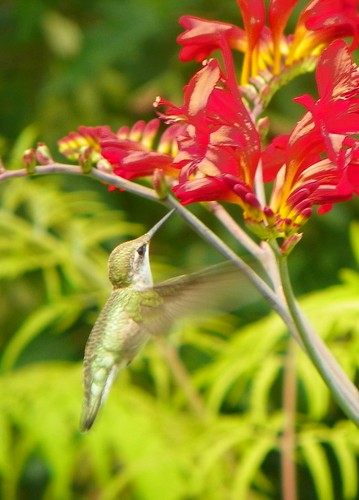
Ruby-throated Hummingbird (Archilochus colubris ) female

Cedar Waxwing pair (Bombycilla cedrorum)
Posted in Animal life, Environmental, Garden, tagged Canadian Tiger Swallowtail, Enodia anthedon, Great Spangled Fritillary, Judy Burris, Limenitis archippus, Limenitis arthemis, Northern Pearly-Eye, Papilio canadensis, Pearl Crescent, Phyciodes batesii, Speyeria cybele, The Life cycle of Butterflies, Viceroy, Wayne Richards, White Admiral on June 27, 2014| 4 Comments »

Viceroy (Limenitis archippus)
When choosing plants for the garden, I try to keep in mind the needs of garden visitors. Not people who may drop by, but a host of birds, butterflies, bees and other pollinators who enliven the garden every day. And when I’m outside, working in the garden or just strolling, I like to keep my camera close at hand for opportune photo moments. Some of the butterflies that I was lucky enough to ‘capture’ with my camera this season are featured here today.
Opening the post is a Viceroy butterfly, a look-alike of the well-known but disappearing Monarch. Viceroys are a bit smaller, and have a distinctive black line across their hind wings. It was thought that Viceroys benefitted from their mimicry of Monarchs as predators avoid the bad-tasting Monarch, but research suggests that the Viceroy has its own disagreeable taste that wards off birds.
In addition to nectar sources, butterflies also need host plants to serve as nurseries for their caterpillars. Pollinators of all types, including butterflies are under severe pressure from the overuse of pesticides and habitat destruction. Any contribution you can make with your garden is a help.
Some butterflies have very specific requirements for host plants, while others are generalists. Monarchs are well-know to use milkweed. Viceroy caterpillars use willows. There are many willow species, and some, such as corkscrew willow or blue arctic willow, can be pleasing additions to a garden.

White Admiral (Limenitis arthemis)
The White Admiral is closely related to the Viceroy, and also uses willows, cottonwoods, poplars and related trees as its larval food source.

Canadian Tiger Swallowtail (Papilio canadensis)
Here’s a Canadian Tiger Swallowtail visiting catmint. The Canadian is very similar to the Eastern Tiger Swallowtail, but ranges farther north. It is a bit smaller than its southern cousin. Its larval foodplants include birch, aspen, black cherry and other trees.

Pearl Crescent (Phyciodes tharos)
Here’s a Pearl Crescent on the last of the spring forget-me-nots. Pearl Crescents are small butterflies, but their brilliant orange and black pattern is eye-catching. Their larval foodplants are asters.

Northern Pearly-eye (Enodia anthedon)
Northern Pearly-eyes are rapid flyers. They’re usually found in woods or in meadows near a water souce. Unlike many other butterflies, they don’t visit flowers, but land on tree trunks or trails or low vegetation. Adults feed on dung, fungi, carrion, and sap from willows, poplars, and birch. Grasses are their larval foodplant.

Great Spangled Fritillary (Speyeria cybele)
Finally, here’s a Great Spangled Fritillary. The adults nectar on many varieties of flowers, but the larval foodplant is specifically violets. A good source of information about butterflies is the Butterflies and Moths of North America website. The page highlighting the Great Spangled Fritillary is linked here.
A very nice book that features beautiful pictures of the life cycle of 23 common butterfly species, from egg to adult, is The Life Cycles of Butterflies by Judy Burris and Wayne Richards. It offers a terrific introduction to these amazing creatures, and is quite highly recommended.

Posted in Animal life, tagged Canadian Tiger Swallowtail, Eastern Tiger Swallowtail, Papilio canadensis, Papilio glaucus on June 12, 2009| 2 Comments »

After Monarchs, Tiger Swallowtails are probably the most familiar and well-loved eastern North American butterflies. They are certainly eye-catching, with their bright yellow and black colouring and long-tailed wings. Flying from spring to fall, they are avid flower visitors. Females generally have more extensive blue on their hindwing than males. The Tiger Swallowtail caterpillar feeds on the leaves of trees and shrubs, including cottonwood and cherry, while adults nectar at a variety of flowers, and are pictured here on lilac and garden phlox.
The Eastern Tiger Swallowtail (Papilio glaucus) and the Canadian Tiger Swallowtail (Papilio canadensis) are similar in appearance, with the latter occurring farther north. Until 1991 the Canadian was thought to be a subspecies of the Eastern, but research has established that it is a separate species. The two species may hybridize where their ranges overlap. The Eastern Tiger Swallowtail produces two generations a year, while the Canadian, just one. Tiger Swallowtails are appreciated by birds as tasty morsels and missing wing pieces may represent close calls.
